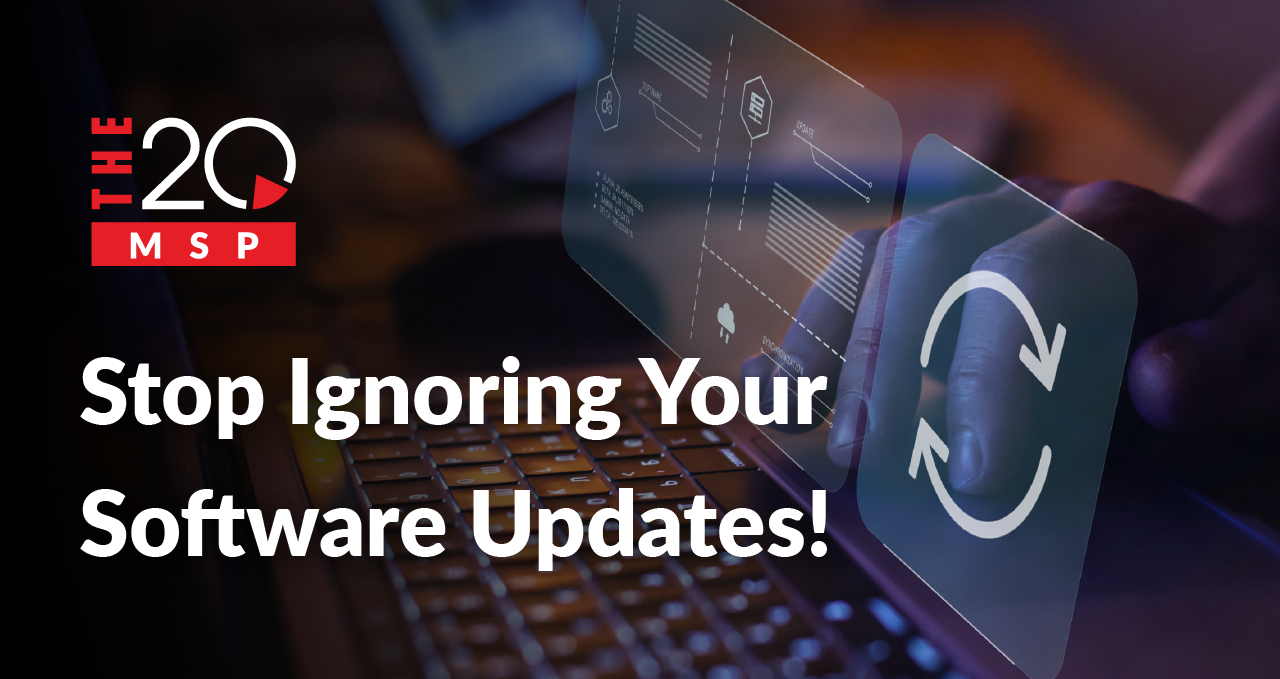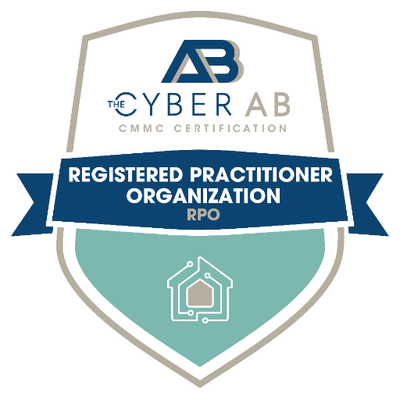
Stop Ignoring Your Software Updates!
Do software updates annoy you? They always seem to pop up at the worst times – asking for a few minutes here, a restart there. It can feel relentless. Every time, those tempting “remind me later” or “ignore” buttons dangle right in front of you, making it all too easy to click…
Wait a second!
Before you click “ignore,” consider this: postponing – or worse yet, denying – software updates makes your device more vulnerable to viruses and hackers. In this article, we’ll explain how updates impact your security, the risks associated with outdated software, and how to avoid update scams.
Let’s get started.
What Is a Software Update?
At its most basic level, a software update – also known as a “patch” – creates a new version of software installed on your device. Most users assume that updates only fix bugs or add new features, but a software update’s true power lies in how it improves your software’s security.
Why Are Updates Important?
When you leave for the day do you lock your front door? Of course you do – no one wants an intruder breaking in while they’re away. This principle applies to your software too: software security acts like the locks on your doors and windows, and vulnerabilities can compromise these locks without your knowledge.
It’s the software developer’s responsibility to identify these vulnerabilities and create updates to fix them. When you ignore an update, you’re essentially leaving those broken locks in place, creating an easy entry point for cybercriminals.
The longer you neglect updates, the greater the risk.
Legacy Software
Wait long enough, and your outdated software may no longer be supported by its developer. This type of software is called legacy software.
While some users may prefer their legacy software – often due to familiarity – these applications no longer have their digital locks secured. This means any vulnerabilities in your legacy software are there to stay, effectively leaving your front door open.
For example, in 2021, Microsoft Exchange Server experienced several vulnerabilities that hackers exploited to access email accounts across legacy Exchange servers. Those who didn’t update their software left themselves open to this disastrous vulnerability.
The message is clear: updating now can save you a lot of trouble later.
Zero-Day Vulnerability
Even your current software can have unknown vulnerabilities, known as zero-day vulnerabilities. These are the main reason behind constant software updates: software companies don’t want to annoy you – they want to protect you.
Security experts work tirelessly to identify these vulnerabilities before hackers can exploit them. When an update is released, it often addresses a zero-day vulnerability. Delaying an update – even by a single day – can have serious consequences.
Keep Compliant
Maintaining regulatory compliance is a constant battle for businesses and outdated software further complicates things. Keeping your software up to date helps you maintain compliance, avoid penalties, and protect your organization’s reputation.
How to Check for Updates
While many updates are automatic by default, you should check for them occasionally, as some updates may require manual installation. To check for updates, simply:
Windows
- Select the Start button.
- Select Settings.
- Select Updates & Security.
- Select Windows Update.
- Select Check for Updates.
Mac
- Click the Apple menu.
- Click System Settings.
- Click General in the sidebar.
- Click Software Update on the right.
Note: if your system is up to date, you won’t have the option to update.
Watch for Fakes!
Here’s the tricky part: hackers know how important software updates are, and deploy fake software updates to trick users into installing malicious software or providing sensitive information. Let’s talk about how to spot these social engineering attacks.
How to Spot a Fake Scam?
Hackers use various tactics when deploying fake updates. Here are some ways to identify them:
- Suspicious URL: Check that the URL matches the official domain of the website. For example, if you receive a Windows Update prompt from “https://adobe-flash-player.net” and not “https://windows-update.com” it’s definitely a fake.
- Spelling Mistakes: Typos or grammatical errors in update notifications are a clear indication of a scam.
- Suspicious Downloads: Be cautious of pop-ups that ask you to download updates from unofficial sources.
- Scare Tactics: If the update uses fear to push you into immediate action, it’s likely a scam.
- Offering Additional Services: If an update includes unrelated services—like a free subscription to an antivirus software—it usually indicates a scam.
As with all cybersecurity, approach software updates with skepticism and caution. Think carefully before clicking, even if it’s annoying to deal with pop-ups. Only install an update when you are 100% certain it’s legitimate. If you have any doubts, you can reach out to your IT team – they can help identify fake scam and guide you on the necessary actions.
Mange Your Updates with an MSP
Organizations can feel overwhelmed by the sheer number of updates required for their software, particularly when it comes to specialized tools used in healthcare or manufacturing. Joining forces with a trusted IT partner can help ease this burden by:
- Setting Up Automatic Updates: MSPs can guide organizations toward fully automated updates, eliminating the guesswork about when updates are available.
- Testing Updates: IT teams can test new updates in controlled environments before rolling them out company-wide. An untested update can lead to some serious issues – consider the Crowd Strike incident. Having professionals dedicated to testing updates is essential for avoiding these pitfalls.
- Monitor for Vulnerabilities: IT professionals continuously monitor your software for vulnerabilities and alert you when updates are necessary.
With that said, it’s still vital that all users understand the basics of software updates. Having someone to handle your updates is great, but knowing how and why updates are happening will enhance your understanding of your cybersecurity.
It’s the Easiest Way to Avoid Disaster
The bottom line is this: most issues that are caused by software vulnerabilities are avoidable. While you shouldn’t blindly install every update, ignoring updates – or worse, using legacy software – opens you up to serious cyberthreats. So think twice before hitting “remind me later,” because you never know when a hacker might strike.
We get it – you won’t always have time to install an update. That’s why partnering with a leading expert like The 20 MSP can make a world of difference. We specialize in automating software updates and monitoring for vulnerabilities, keeping you informed without disrupting your day. We also do cool things like schedule updates during off-hours to avoid disrupting your operations. Don’t sweat the pop-ups – we’ve got you covered.



